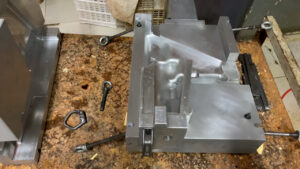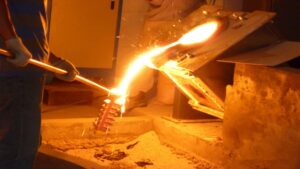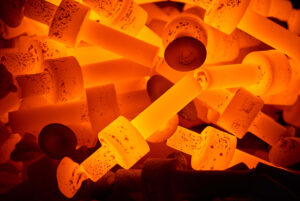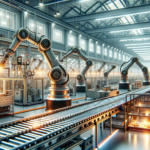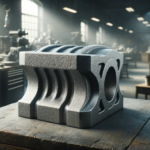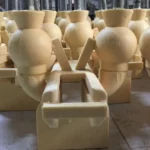Language:
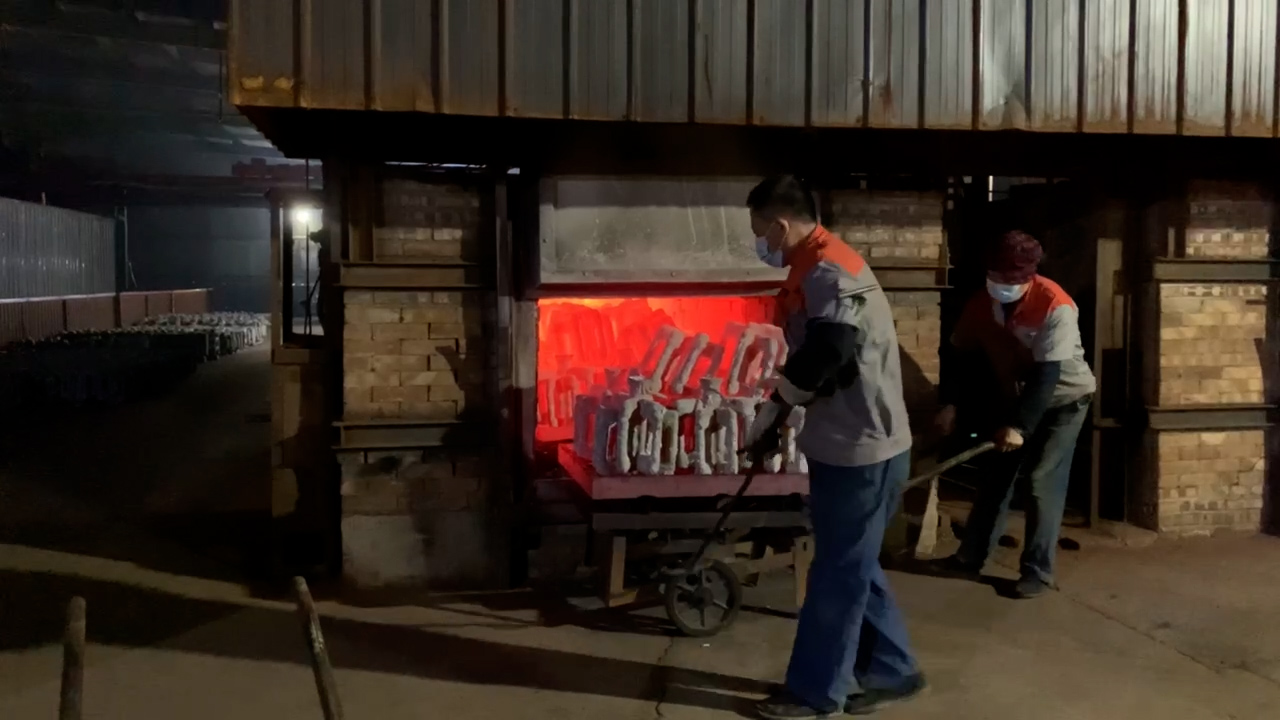
The Art of Shell Firing in Investment Casting: A Deep Dive into Precision Manufacturing
In the nuanced realm of investment casting, shell firing stands as a critical process, instrumental in defining the quality and precision of the final product. This blog aims to explore the process of shell firing, a critical stage in the investment casting technique that significantly influences the outcome of metal components.
Investment casting, known for its ability to produce complex and detailed shapes with exceptional accuracy, involves creating a detailed wax model, coating it with a ceramic material to form a mould, and then heating it to remove the wax and harden the shell. It is at this juncture that shell firing plays its crucial role. The process of firing the ceramic shell is not just a step in manufacturing; it is a confluence of art and science, where temperature control, timing, and material choice converge to define the integrity and capabilities of the final cast.
Our journey through this blog will dive into the technicalities of shell firing, examining the materials and methods that underpin this process. From understanding the basic principles to exploring the challenges and innovations, we will unravel how shell firing in investment casting shapes the world of precision manufacturing.
By the conclusion of this exploration, readers will gain a comprehensive insight into shell firing, appreciating its critical role in the investment casting industry. This knowledge is not only pivotal for professionals in the field but also enlightening for anyone intrigued by the sophisticated processes behind the creation of intricate metal components.
Basics of Investment Casting
Investment casting, a technique revered for its precision and versatility, has been a cornerstone in the manufacturing of complex metal components for various industries. This section aims to lay the foundational understanding of investment casting, setting the stage for the in-depth exploration of the shell firing process.
Overview of Investment Casting: Investment casting, often referred to as lost-wax casting, is a process that allows for the creation of intricate and precise metal parts. It begins with the production of a wax model, which is an exact replica of the desired final product. This model is then encased in a ceramic material to create a mould. Once the mould is set, the wax is melted and drained away, leaving a hollow ceramic shell – the mould in which the metal will be cast.
Role of Shell Firing: Shell firing is a critical stage in this process. After the wax is removed, the ceramic shell is subjected to high temperatures in a firing kiln. This step serves multiple purposes: it strengthens the mould, ensuring it can withstand the pouring of molten metal, and it removes any residual wax, thereby preventing defects in the final casting. The integrity and performance of the investment casting are significantly dependent on the effectiveness of the shell firing process.
Significance in the Final Outcome: The quality of the shell firing process directly impacts the structural integrity and dimensional accuracy of the final metal part. Any shortcomings in this stage can lead to defects such as cracks or distortions in the casting. Hence, shell firing is not merely a step in the process but a critical determinant of the quality and success of the investment casting method.
Understanding Shell Firing
Delving deeper into the investment casting process, we arrive at the pivotal stage of shell firing. This section aims to elucidate the intricacies of shell firing, an essential process that significantly enhances the quality and integrity of investment castings.
Definition and Process: Shell firing, in the context of investment casting, involves heating the ceramic shell mould to high temperatures. This process is executed after the wax is melted out, leaving a hollow ceramic form. The primary purpose of firing the shell is to strengthen it, ensuring it can withstand the stresses of molten metal being poured during the casting process. The firing is done in a kiln, where the shell is subjected to a controlled heating cycle.
Materials Used in Shell Creation: The ceramic shell is typically composed of materials such as silica, alumina, or zircon. These materials are selected for their ability to withstand high temperatures and their thermal shock resistance. The shell is built up in layers, each of which is allowed to dry before the next is applied. This layering creates a robust mould capable of producing detailed and high-quality castings.
The Importance of Temperature and Time Control: The temperature and duration of the shell firing are critical factors. If the temperature is too low or the firing duration too short, the shell may not achieve the necessary strength, leading to defects in the casting. Conversely, excessive temperatures or prolonged firing can cause the shell to become brittle and prone to cracking. Achieving the right balance is crucial for the creation of a strong, yet not brittle, shell that accurately captures the intricacies of the desired casting.
Impact on Casting Quality: The quality of the shell firing process directly influences the surface finish and dimensional accuracy of the final casting. A well-fired shell ensures a smooth surface and precise replication of the original wax model’s details. It also minimises the occurrence of defects such as cracks or warping in the final metal part.
In essence, shell firing is a delicate balance of science and art, requiring precise control over temperature and timing to achieve shells of optimal strength and integrity. This stage is not merely a technical necessity but a craft in itself, underpinning the success of the investment casting process and the quality of the final metal components.
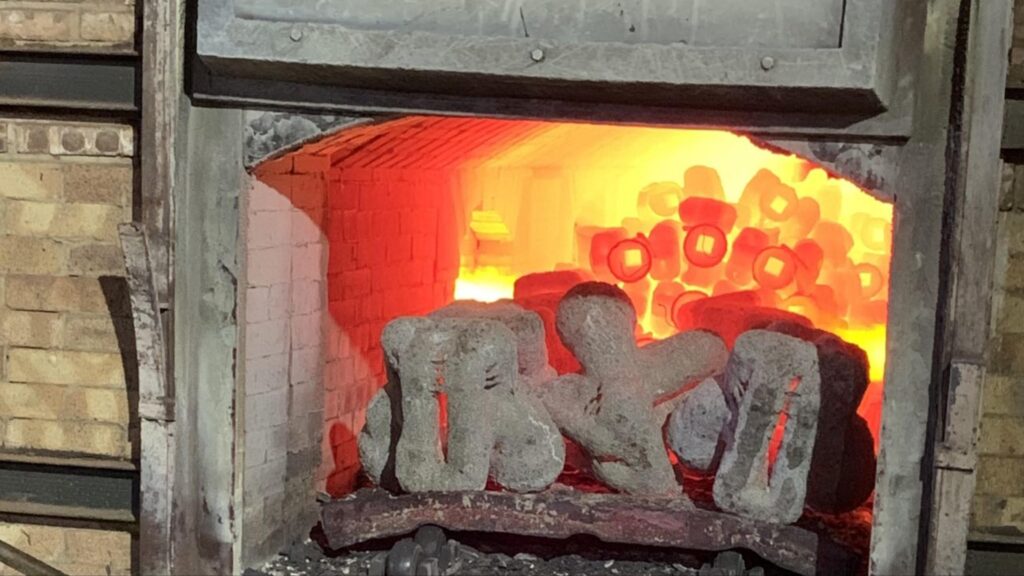
The Importance of Shell Firing in Investment Casting
The role of shell firing in investment casting is pivotal, impacting both the integrity of the mould and the quality of the final casting. This section explores the various ways in which shell firing contributes to the overall success of the investment casting process.
Structural Integrity of the Mould: The primary function of shell firing is to enhance the strength of the ceramic shell. A robust shell is crucial for withstanding the thermal stresses during the pouring of molten metal. The high temperatures of shell firing serve to vitrify the ceramic material, a process that increases its density and strength. This vitrification ensures that the shell can maintain its shape and integrity, providing a stable mould for the metal to be cast into.
Influence on Precision and Quality Control: Shell firing also plays a critical role in ensuring the precision of the castings. A well-fired shell possesses a smooth internal surface that faithfully replicates the intricate details of the original wax model. This accuracy is crucial in industries where components require high levels of detail and exact dimensional tolerances, such as in aerospace or medical device manufacturing.
Preventing Defects in Castings: Proper shell firing reduces the likelihood of defects in the final metal parts. Inadequate firing can lead to issues such as shell cracking or deformation, which can cause imperfections in the casting. A meticulously controlled firing process helps to avoid these issues, ensuring that the castings meet the required quality standards.
Impact on Surface Finish: The quality of the shell firing process directly affects the surface finish of the cast components. A well-fired shell allows for a smoother surface, reducing the need for extensive post-casting finishing processes. This is particularly important for applications where the aesthetic quality of the component is as important as its functional attributes.
Technical Aspects of Shell Firing
Advancing our understanding of investment casting, it is imperative to delve into the technical aspects of shell firing. This section aims to dissect the critical elements of this process, highlighting the technicalities that govern its efficacy.
Temperature and Duration: The temperature and duration of the shell firing process are paramount. Optimal firing temperature usually ranges between 870°C and 1100°C, depending on the shell materials used and the specific requirements of the casting. This temperature range is crucial for achieving the necessary chemical and physical changes in the ceramic material, leading to the desired strength and stability. Equally important is the duration of firing, which must be carefully calibrated to ensure the shell is neither underfired nor overfired. This precision in temperature and time control is what dictates the success of the shell firing process.
Monitoring and Control: The ability to precisely monitor and control the firing process is vital. Advanced kiln technologies equipped with temperature control systems are employed to maintain the required firing conditions. The consistent and uniform heating of the entire shell is essential to prevent any weak spots that could compromise the integrity of the casting.
Challenges in Shell Firing: Despite the technological advancements, shell firing presents several challenges. One of the primary concerns is thermal shock, which can occur if the shell is heated or cooled too rapidly. This can lead to cracking and damage, rendering the shell unusable. Another challenge is ensuring uniform heating throughout the shell, especially for larger or more complex moulds.
Solutions and Best Practices: To mitigate these challenges, several best practices are employed. Gradual heating and cooling rates are used to minimise the risk of thermal shock. The shells are often placed in a preheated kiln and the temperature is increased gradually. Uniform heating is achieved through meticulous kiln design and the strategic placement of shells within the kiln. The use of programmable controllers to regulate the firing cycle ensures repeatability and consistency in shell quality.
Innovations and Advancements in Shell Firing
As the investment casting industry continues to evolve, so too do the techniques and technologies associated with shell firing. This section examines the latest innovations and potential future advancements in this crucial stage of the casting process.
Technological Advancements in Shell Firing: The integration of cutting-edge technology into shell firing has markedly enhanced both efficiency and outcome. Recent advancements include the use of automated kiln systems, which allow for precise control over the firing environment. These systems can adjust temperature and humidity levels in real-time, ensuring optimal firing conditions and mitigating the risk of defects. Additionally, advancements in materials science have led to the development of new refractory materials for shells, offering improved thermal properties and greater durability.
Enhancing Quality and Efficiency: Modern technologies in shell firing aim not only to improve the quality of the castings but also to increase the efficiency of the process. For instance, new kiln designs provide more uniform heat distribution, reducing firing times and energy consumption. This not only streamlines the production process but also contributes to cost savings and a reduced environmental footprint.
Future Trends in Shell Firing: Looking to the future, there is significant potential for further innovation. One area of focus is the development of more sustainable and environmentally friendly firing processes. This could involve the use of alternative energy sources or the recycling of heat generated during firing. Additionally, there is ongoing research into smart monitoring systems that use sensors and data analytics to predict and prevent potential issues during firing, thereby further enhancing the reliability of the process.
The Role of Research and Development: Continuous research and development are vital to the future of shell firing in investment casting. Collaboration between foundries, material scientists, and engineers is key to driving forward these technological advancements. By staying at the forefront of innovation, companies can not only improve their own processes but also contribute to the broader advancement of the investment casting industry.
Conclusion
As we conclude our exploration of shell firing in investment casting, it becomes clear that this process is a critical and dynamic aspect of the industry. The journey from understanding the basics to appreciating the latest advancements underscores the complexity and importance of this stage in precision casting. Within this intricate landscape, companies like Taiyuan Simis Investment Casting Co., Ltd play a pivotal role, exemplifying the blend of tradition and innovation that characterises the field.
Taiyuan Simis Investment Casting Co., Ltd, with its commitment to embracing technological advancements and maintaining high-quality standards, stands as a testament to the evolving nature of the investment casting industry. Their approach to shell firing – balancing meticulous precision with innovative techniques – mirrors the broader industry trend towards greater efficiency, quality, and sustainability.
The ongoing developments in shell firing, highlighted by the work at Taiyuan Simis, not only enhance the capabilities of the investment casting process but also open new avenues for exploration and improvement. As the industry continues to evolve, the role of experienced and forward-thinking companies like Taiyuan Simis Investment Casting Co., Ltd becomes increasingly significant. Their contributions not only drive their own growth but also shape the future direction of the investment casting industry.
In summary, the world of shell firing in investment casting is one of intricate detail, technical challenges, and continuous innovation. As we look to the future, it is clear that companies like Taiyuan Simis Investment Casting Co., Ltd will continue to play a crucial role in pushing the boundaries of what is possible, ensuring that the industry remains at the cutting edge of manufacturing technology.
